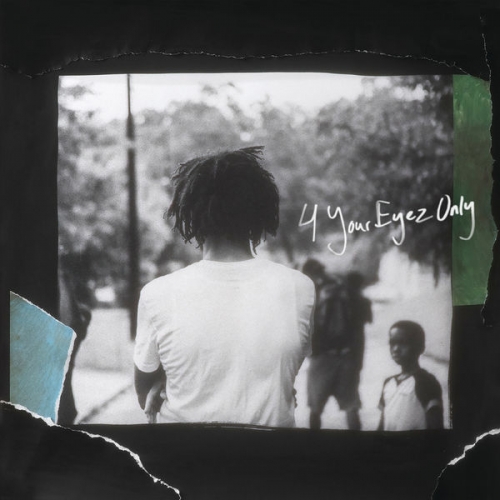Michelle Makarski, Thomas Larcher - Elogio Per Un'Ombra (2000)

Artist: Michelle Makarski, Thomas Larcher
Title: Elogio Per Un'Ombra
Year Of Release: 2000
Label: ECM New Series
Genre: Classical
Quality: FLAC (tracks)
Total Time: 01:03:50
Total Size: 284 Mb
WebSite: Album Preview
Tracklist: Title: Elogio Per Un'Ombra
Year Of Release: 2000
Label: ECM New Series
Genre: Classical
Quality: FLAC (tracks)
Total Time: 01:03:50
Total Size: 284 Mb
WebSite: Album Preview
Giuseppe Tartini (1692-1770): Sonata #7 in la minore - 1745-70 (4 tracks, 09:06)
01. Sonata #7: Tema con variazion, variazione 8 01:04
02. Sonata #7: Adagio 02:27
03. Sonata #7: Allegro 02:44
04. Sonata #7: Allegro 02:51
Luigi Dallapiccola (1904-1975): Due studi - 1947 (2 tracks, 10:56)
05. Due Studi: I Sarabanda 06:16
06. Due Studi: II Fanfara e fuga 04:40
Goffredo Petrassi (1905-2003): Elogio per un'ombra, per Alfredo Casella- 1971
07. Elogio per un'ombra 14:29
Luciano Berio (1925-2003) : Due pezzi - 1952 (2 tracks, 07:31)
08. Due pezzi: I Calmo 05:04
09. Due pezzi: II Quasi allegro, alla marcia 02:27
Giuseppe Tartini (1692-1770): Sonata #7 in la minore - 1745-70 (4 tracks, 03:07)
10. Sonata #7: Tema con variazioni, variazione 13 00:36
11. Sonata #7: Tema con variazioni, variazione 18 00:58
12. Sonata #7: Tema con variazioni, variazione 15 00:32
13. Sonata #7: Tema con variazioni, variazione 14 01:01
Elliott Carter (b. 1908): Riconoscenza per Goffredo Petrassi - 1984
14. Four Lauds: II Riconoscenza per Goffredo Petrassi 05:24
Giuseppe Tartini (1692-1770): Sonata #7 in la minore - 1745-70 (2 tracks, 02:03)
15. Sonata #7: Tema con variazioni, variazione 8 00:53
16. Sonata #7: Tema con variazioni, Tema 01:10
George Rochberg (1918-2005): Caprice Variations - 1970 (4 tracks, 09:34)
17. Caprice Variations: Variation 12, Andante con moto 01:52
18. Caprice Variations: Variation 27, Aria 03:01
19. Caprice Variations: Variation 6, Poco allegretto, ma con rubato 02:05
20. Caprice Variations: Variation 37, Barcarolla 02:36
Anonymous: Lamento di Tristano (1300)
21. Lamento di Tristano 02:10
Performers:
Michelle Makarski (violin)
Thomas Larcher (piano)
Violinist Michelle Makarski's versatility, technique, and intuitive grasp of multiple traditions place her in alignment with the most accomplished of late 20th and early 21st century violinists, including Paul Zukofsky, Gidon Kremer, and Irvine Arditti. Released in 2000, her album Elogio per Un'ombra is an extraordinary achievement which defines both her artistry and the expanded philosophy of musical presentation that has come to characterize Manfred Eicher's ECM label since the introduction of its New Series and the inclusion of diverse works dating from different centuries. Stephen Hartke's beautifully written program notes contain a passage comparing the structure of this album to "a handsome, persuasive architectural plan". Equipped with this metaphor, Hartke suggests we regard the various works by different composers as separate but interconnected rooms, some of which are mutually visible through adjoining portals. The primary piece with which Makarski opens the program is Giuseppe Tartini's Sonata No. 7 in A Minor. Tartini (1692-1770) is remembered as both master violinist and tonal theoretician. The haunted aspect of his theme and variations acts beautifully to prepare the ground for works by a series of 20th century composers. For Luigi Dallapiccola's Due Studi and Luciano Berio's Due Pezzi Makarski is joined by pianist Thomas Larcher. The rest of the program she delivers alone.
Whereas Goffredo Petrassi's Elogio per Un'ombra is dedicated to the memory of composer Alfredo Casella, amidst its shadowy veils the concept of elegy becomes deliciously enigmatic, so that by the time four additional and very brief variations by Tartini appear after the Berio, one is more than ready for Elliott Carter's tribute to Petrassi, followed by two more veils by Tartini and four out of George Rochberg's 50 Caprice Variations, which were based upon Paganini's Caprice No. 24. Like Paganini, Tartini was accused of tapping into diabolical resources for inspiration and in order to achieve virtuosity. The album closes with the Lamento di Tristano, anonymously composed in the 14th century and described by Hartke as one of the oldest surviving examples of Italian instrumental music. The non-linearity demonstrated by Makarski's choice of composers from different centuries suggests yet another metaphor, that of the inner ear, where two simultaneously received tones can and do combine to form a third. Because Giuseppe Tartini was the first to specifically identify and elaborate upon these combinatory wavelengths, they have come to be called Tartini Tones. Listen for them.
Whereas Goffredo Petrassi's Elogio per Un'ombra is dedicated to the memory of composer Alfredo Casella, amidst its shadowy veils the concept of elegy becomes deliciously enigmatic, so that by the time four additional and very brief variations by Tartini appear after the Berio, one is more than ready for Elliott Carter's tribute to Petrassi, followed by two more veils by Tartini and four out of George Rochberg's 50 Caprice Variations, which were based upon Paganini's Caprice No. 24. Like Paganini, Tartini was accused of tapping into diabolical resources for inspiration and in order to achieve virtuosity. The album closes with the Lamento di Tristano, anonymously composed in the 14th century and described by Hartke as one of the oldest surviving examples of Italian instrumental music. The non-linearity demonstrated by Makarski's choice of composers from different centuries suggests yet another metaphor, that of the inner ear, where two simultaneously received tones can and do combine to form a third. Because Giuseppe Tartini was the first to specifically identify and elaborate upon these combinatory wavelengths, they have come to be called Tartini Tones. Listen for them.







![Afrodream - Guiss Guiss (2025) [Hi-Res] Afrodream - Guiss Guiss (2025) [Hi-Res]](https://www.dibpic.com/uploads/posts/2025-12/1765638325_a2717494732_0.jpg)
